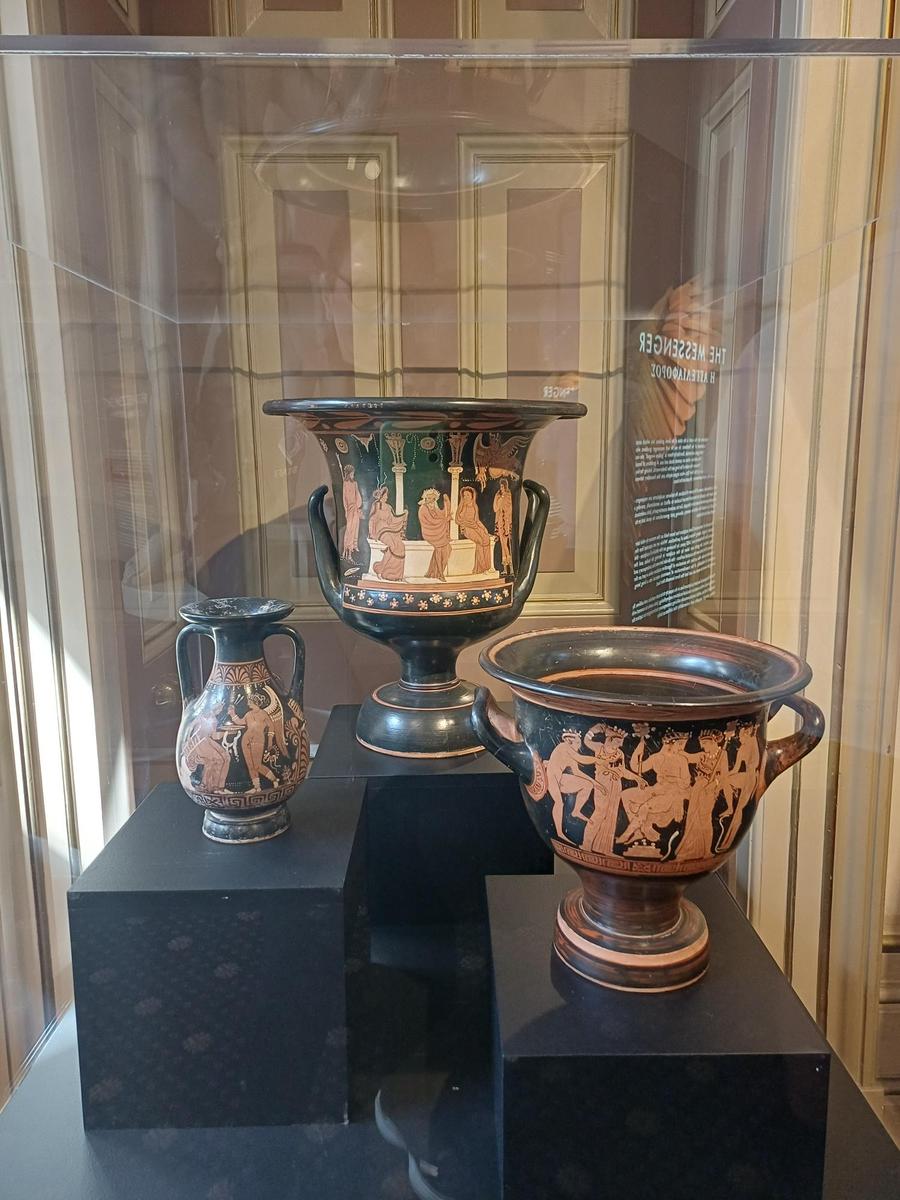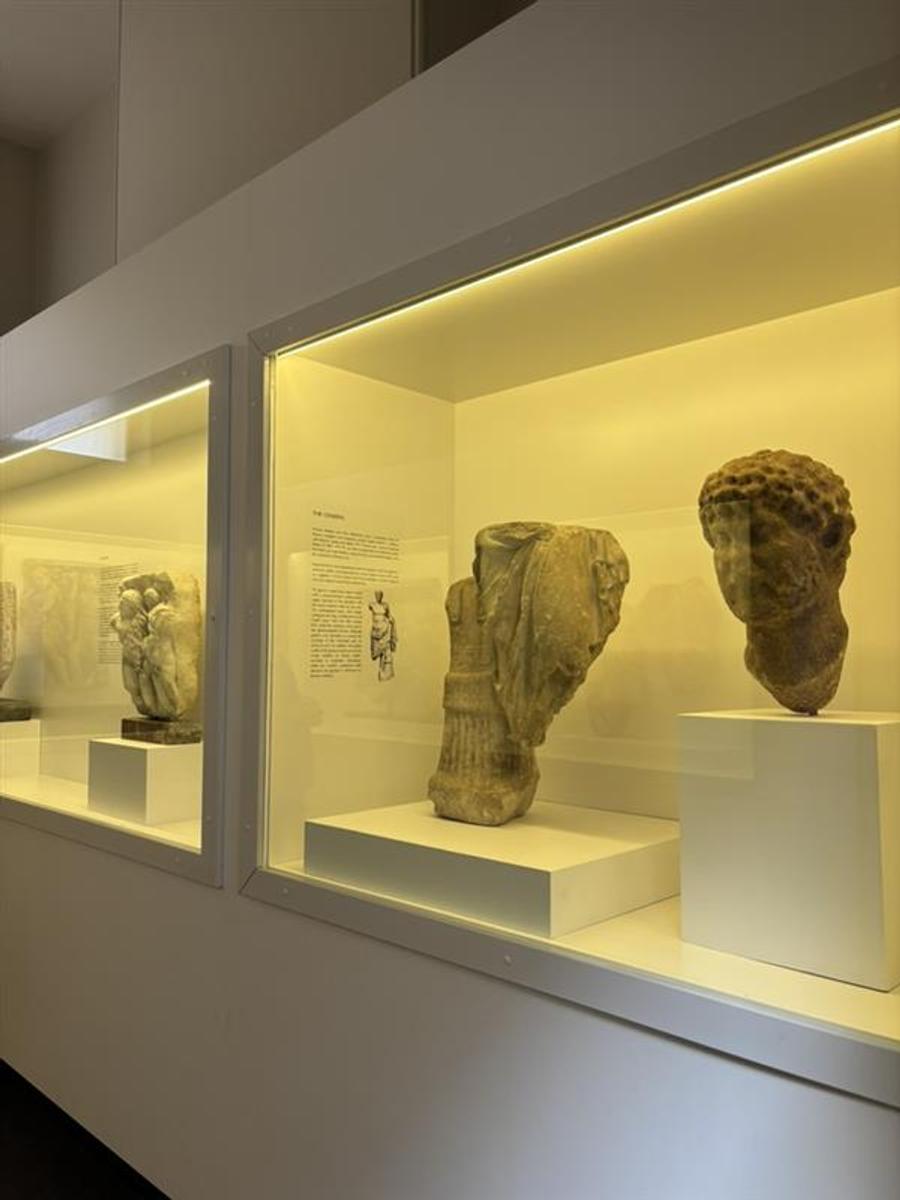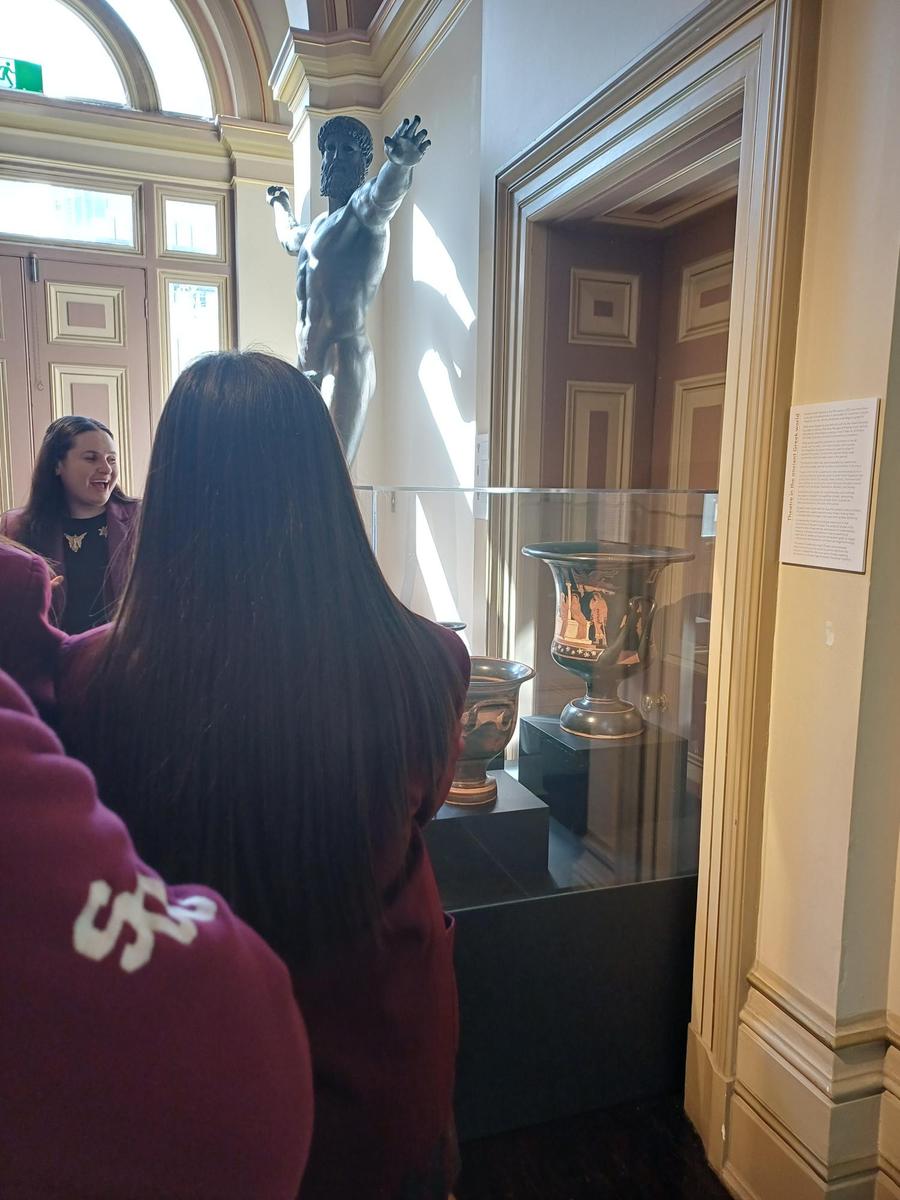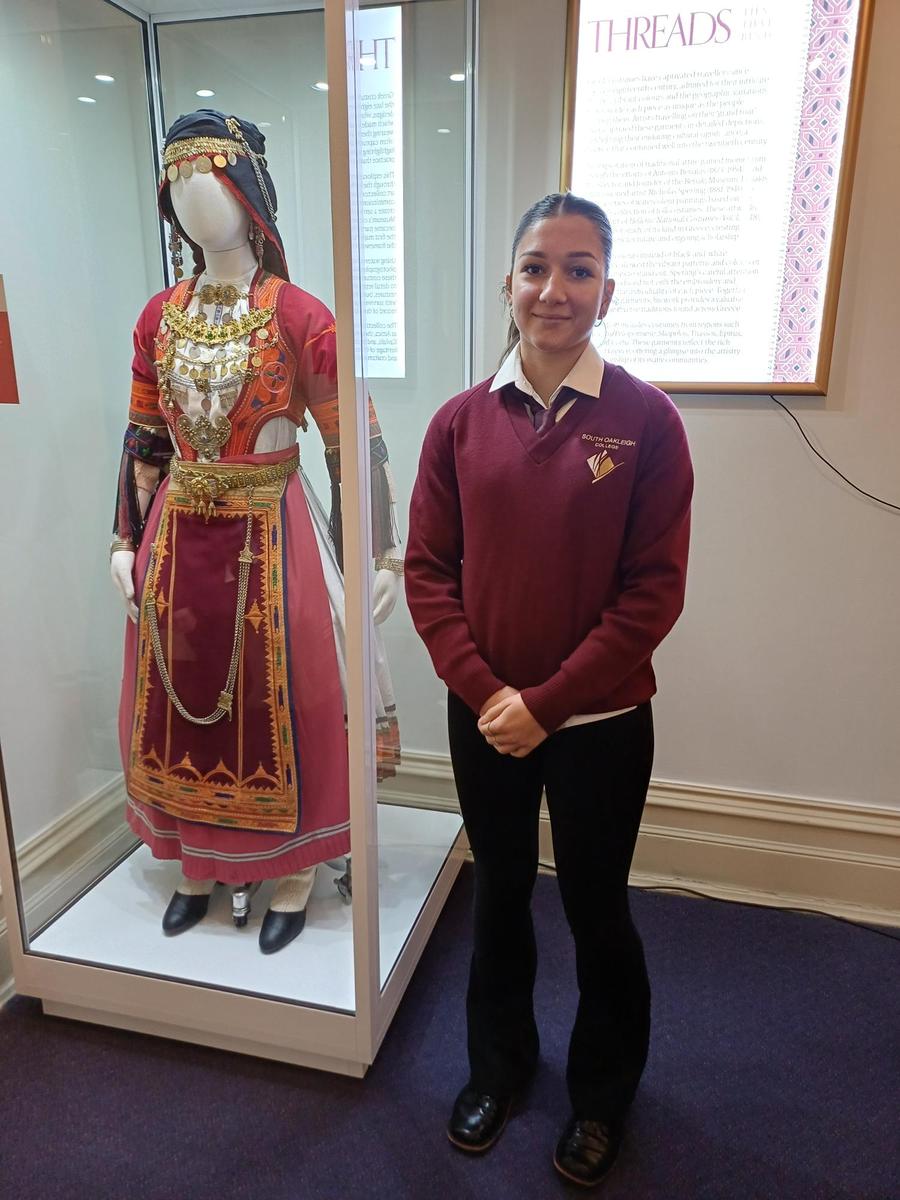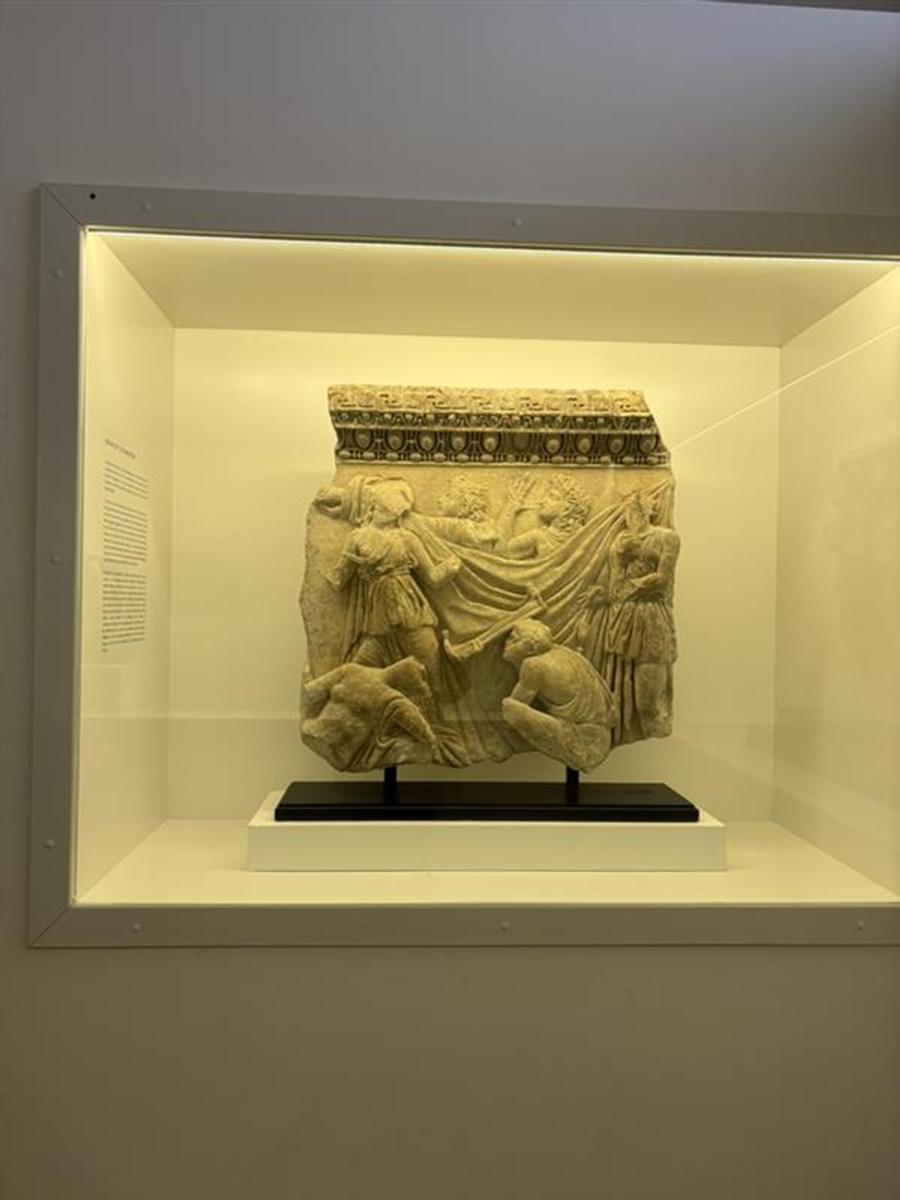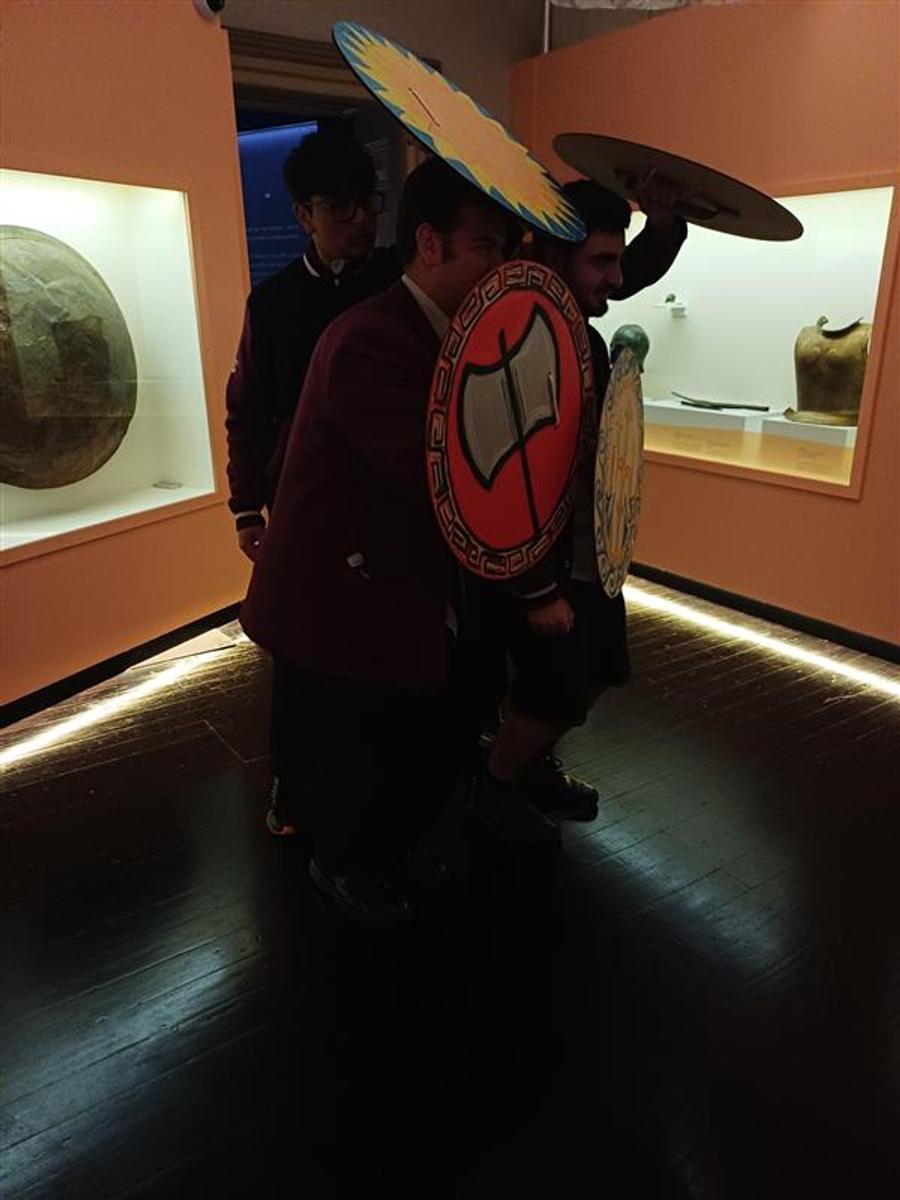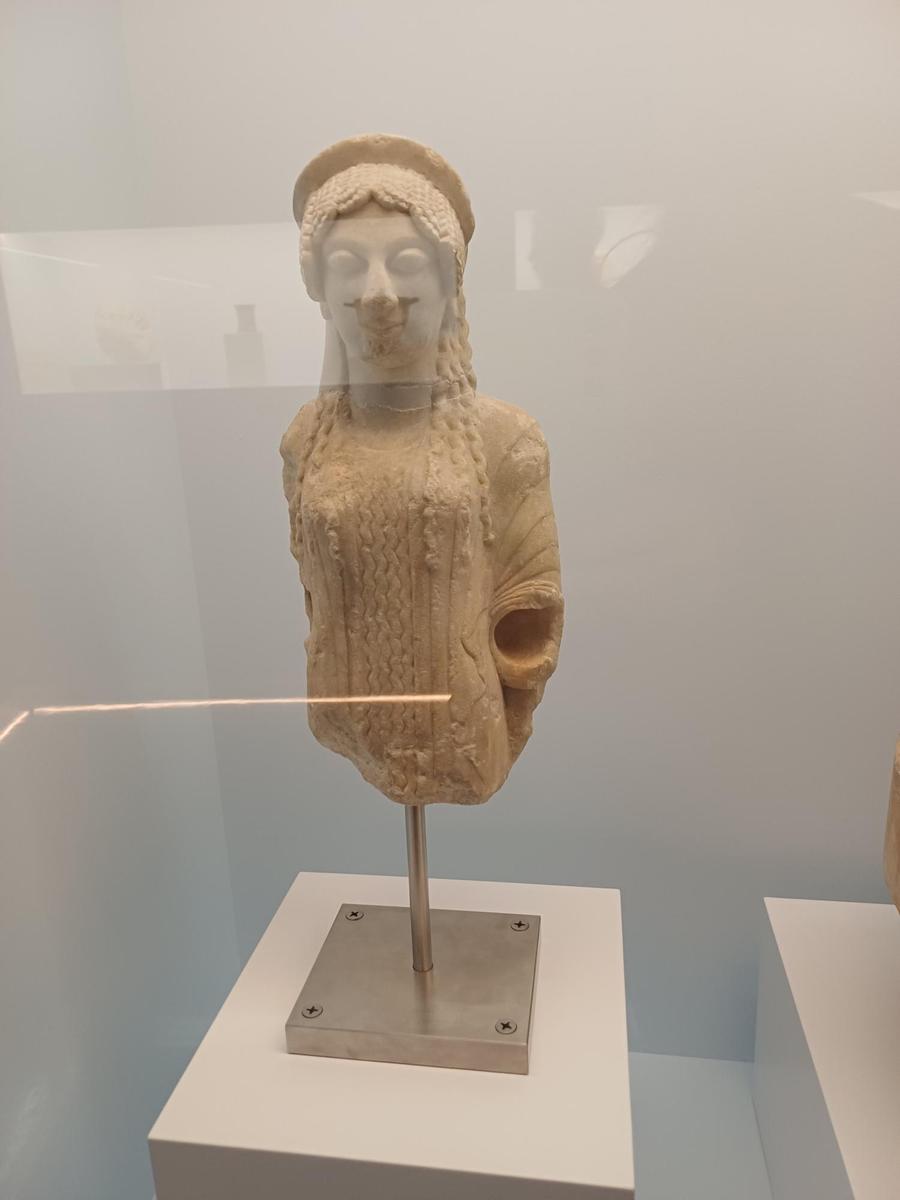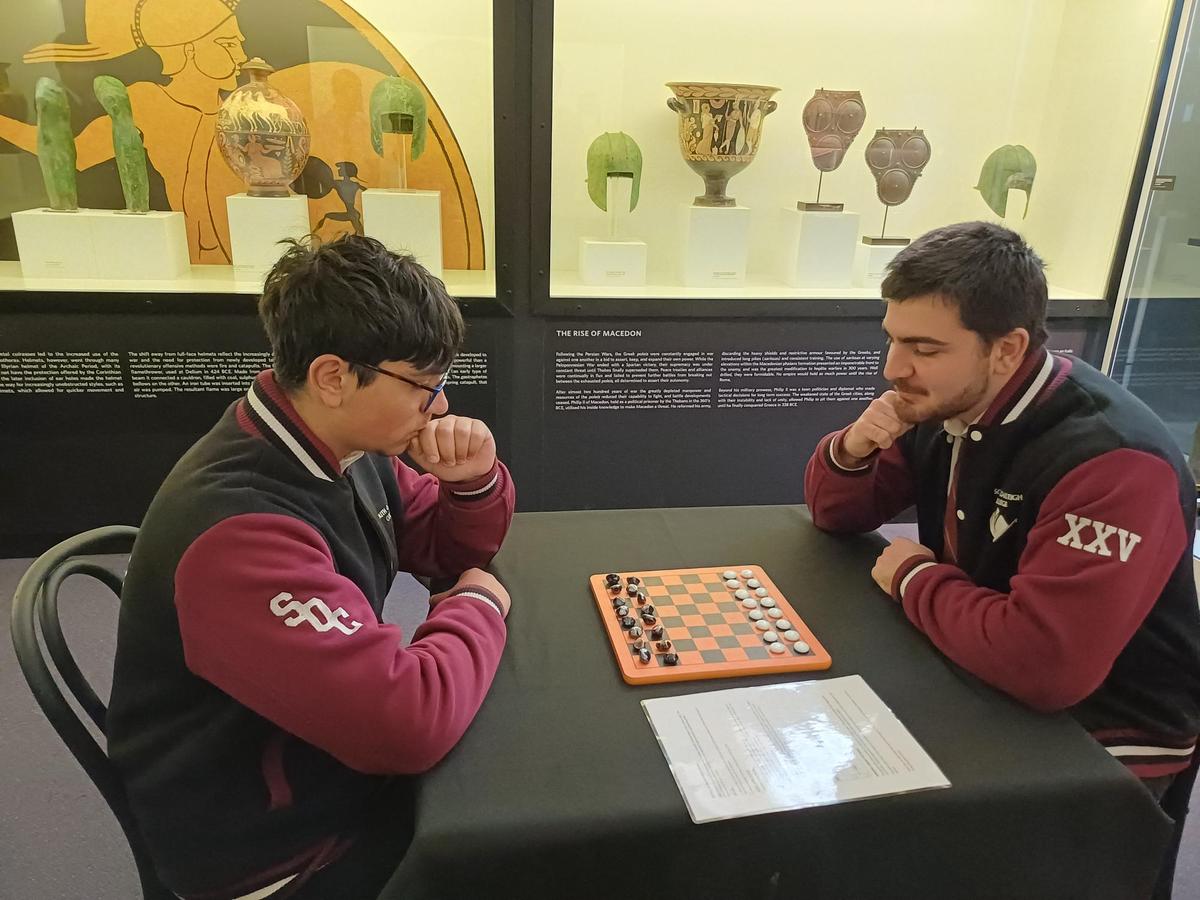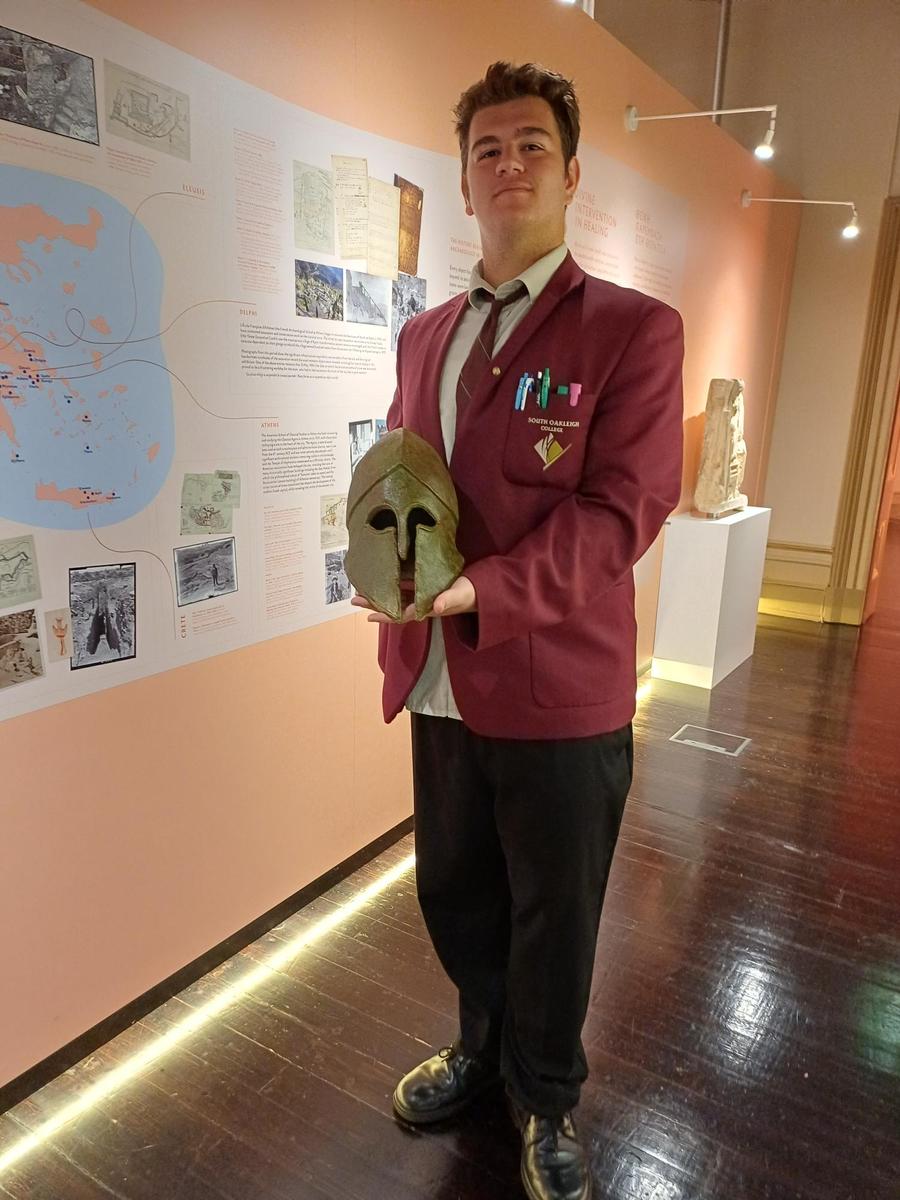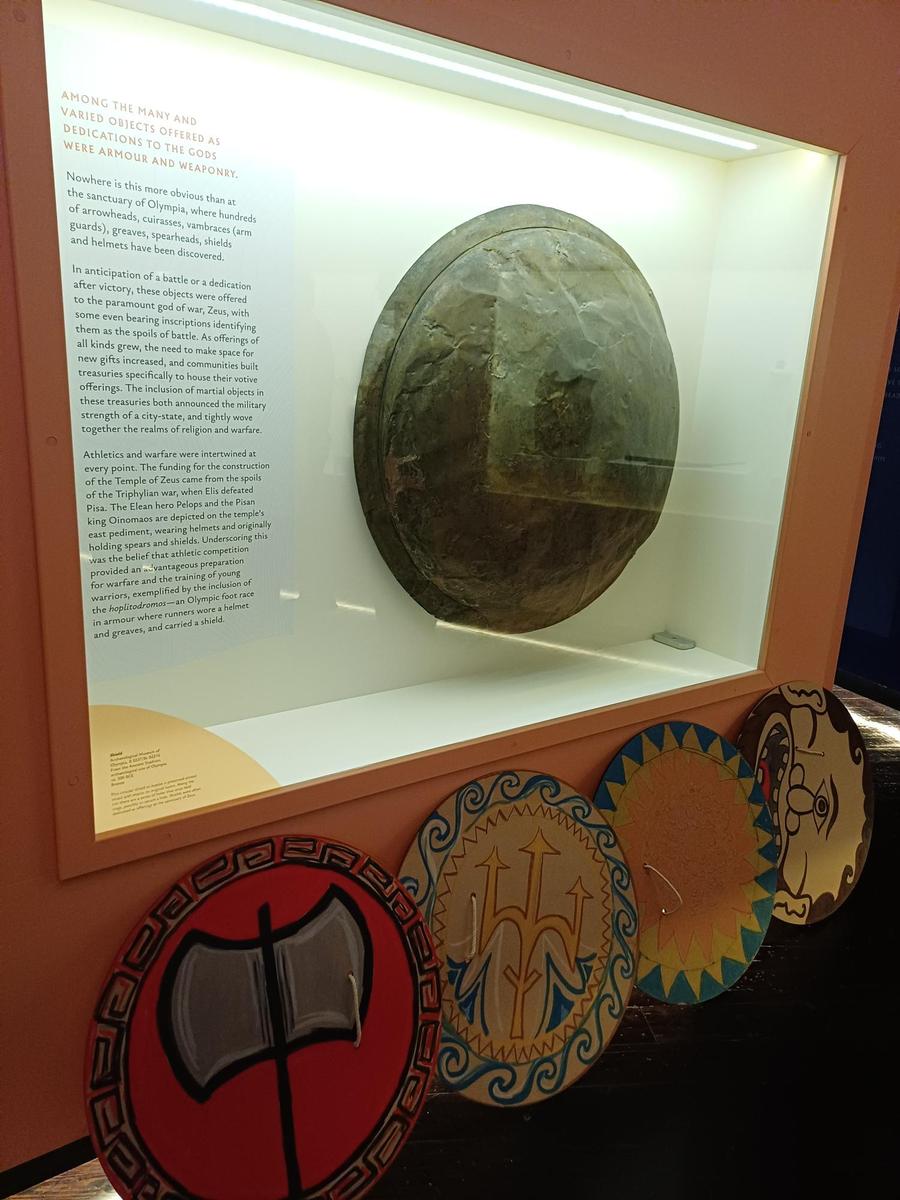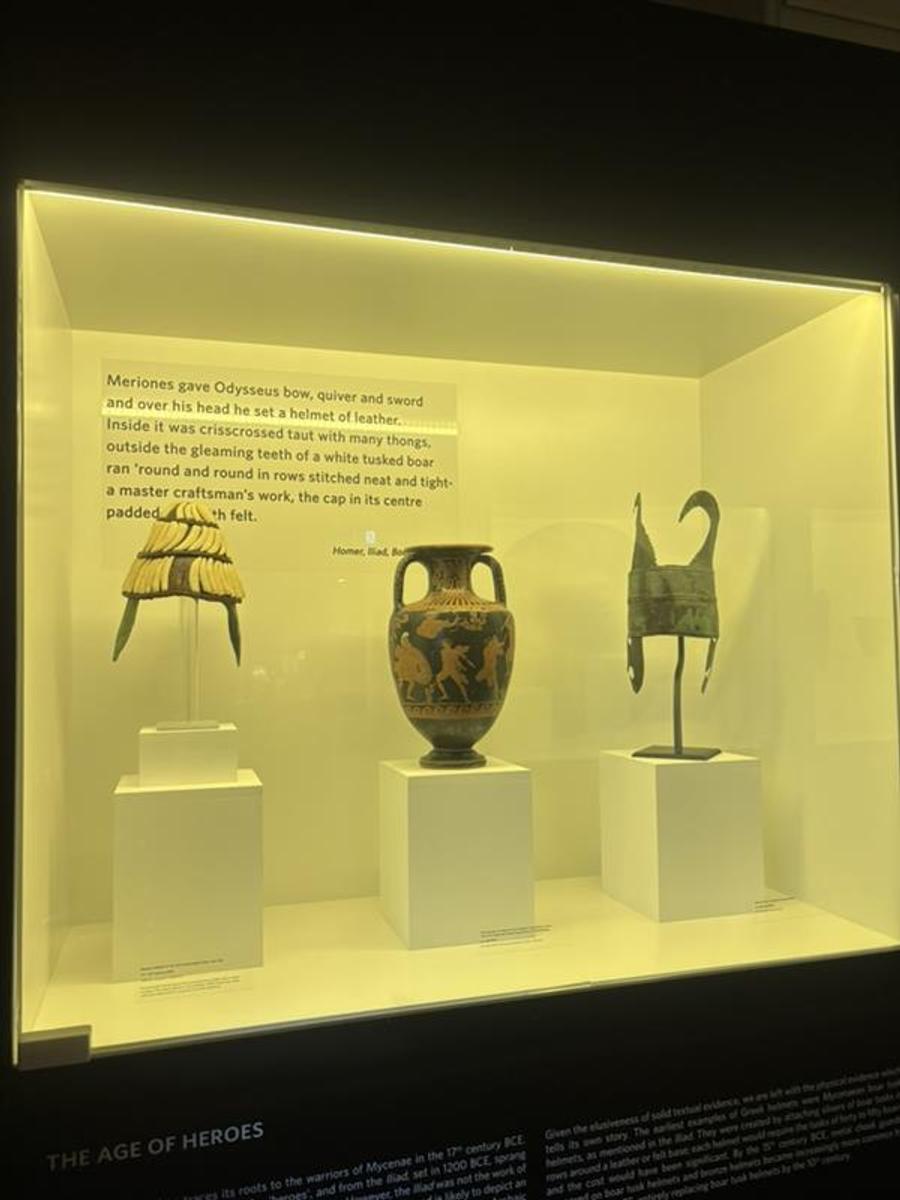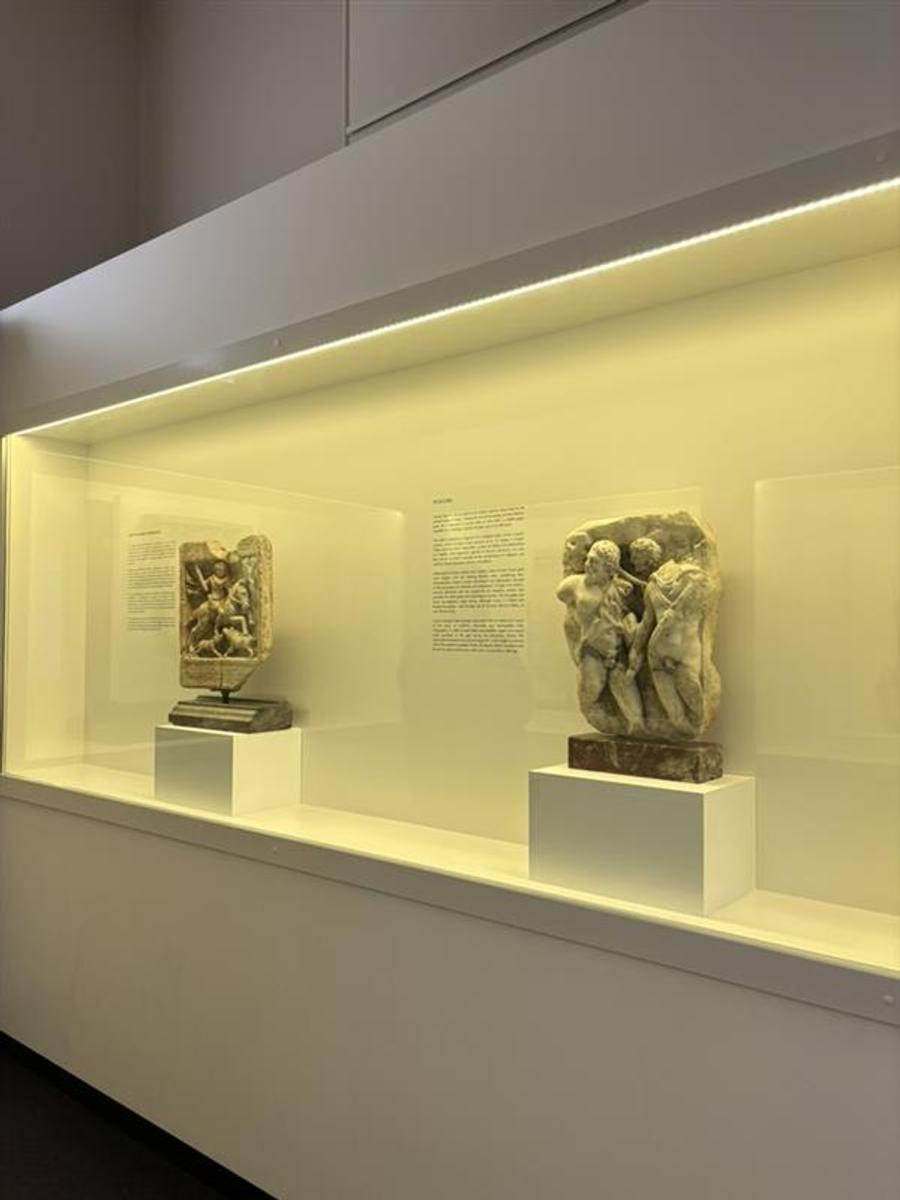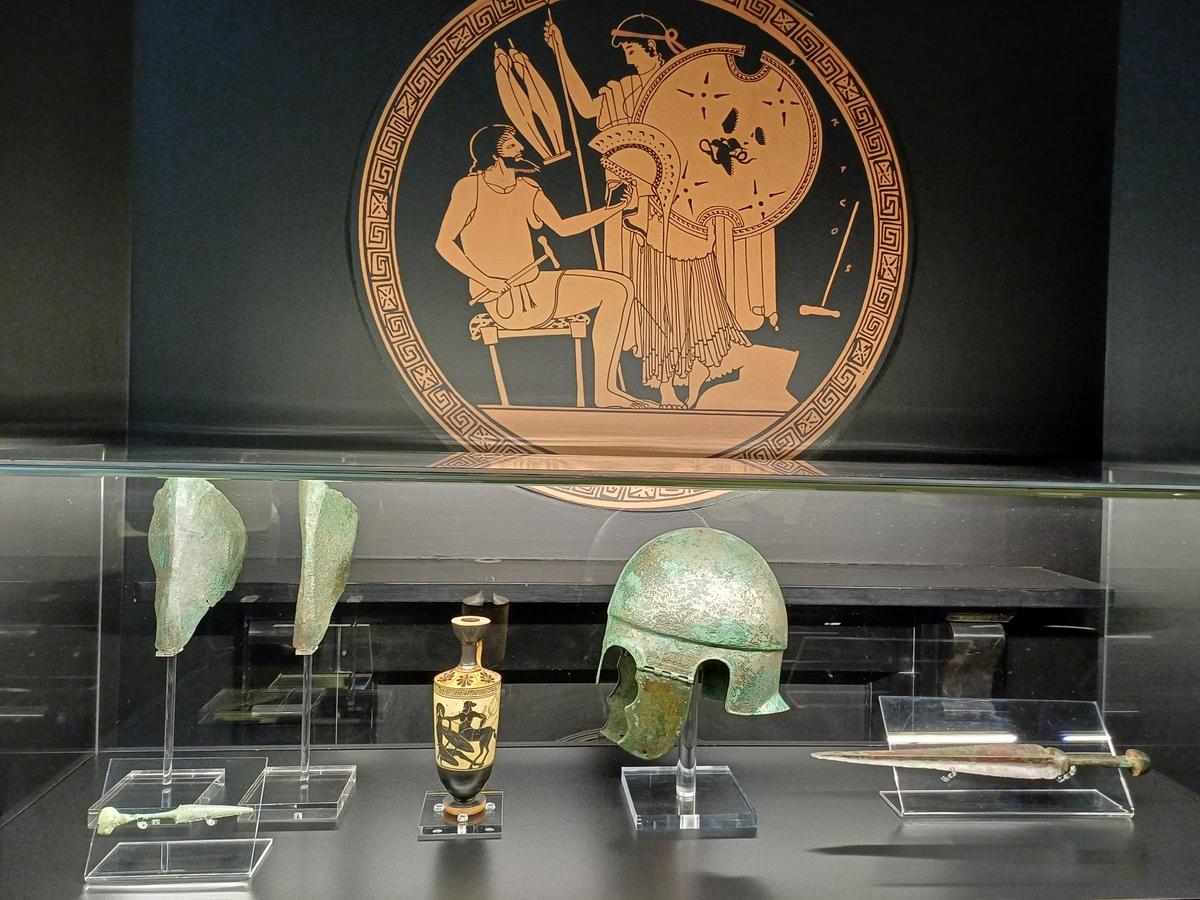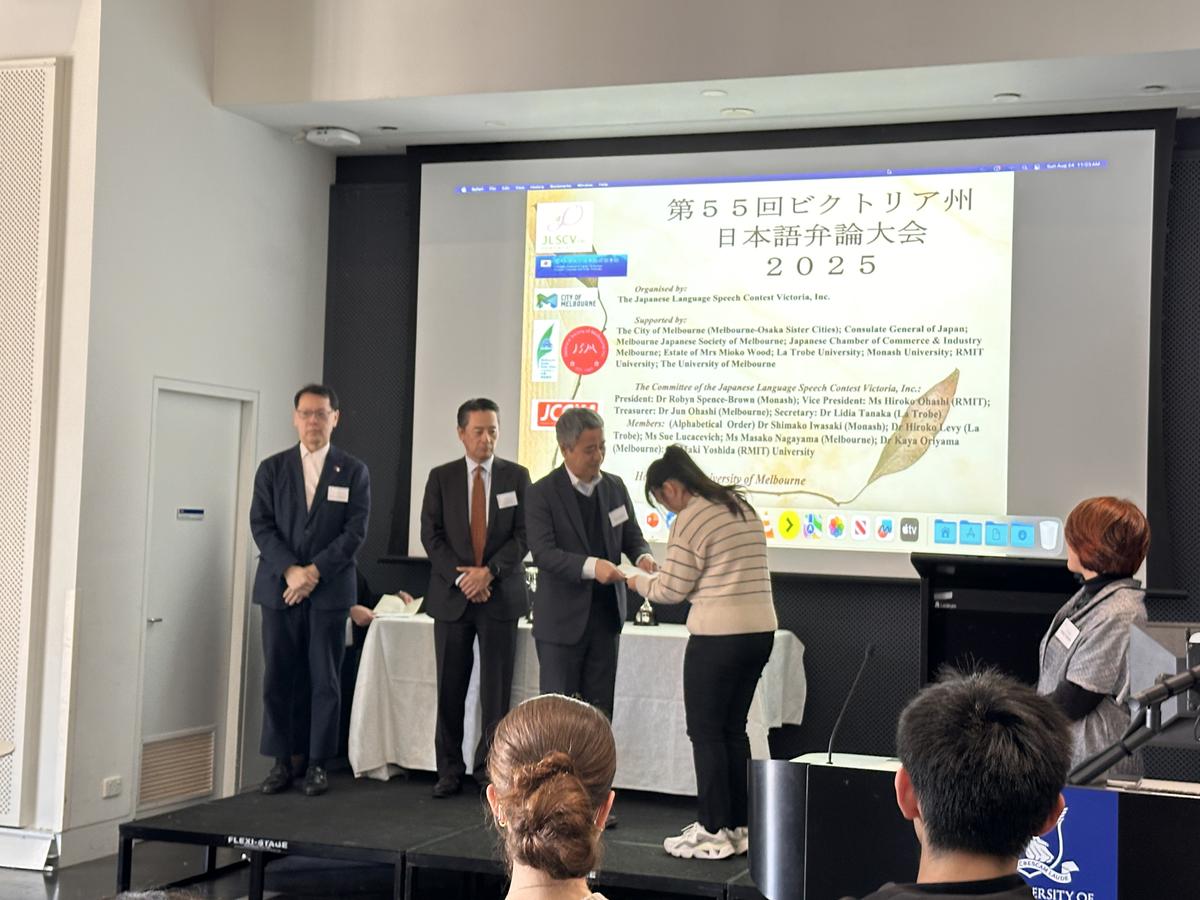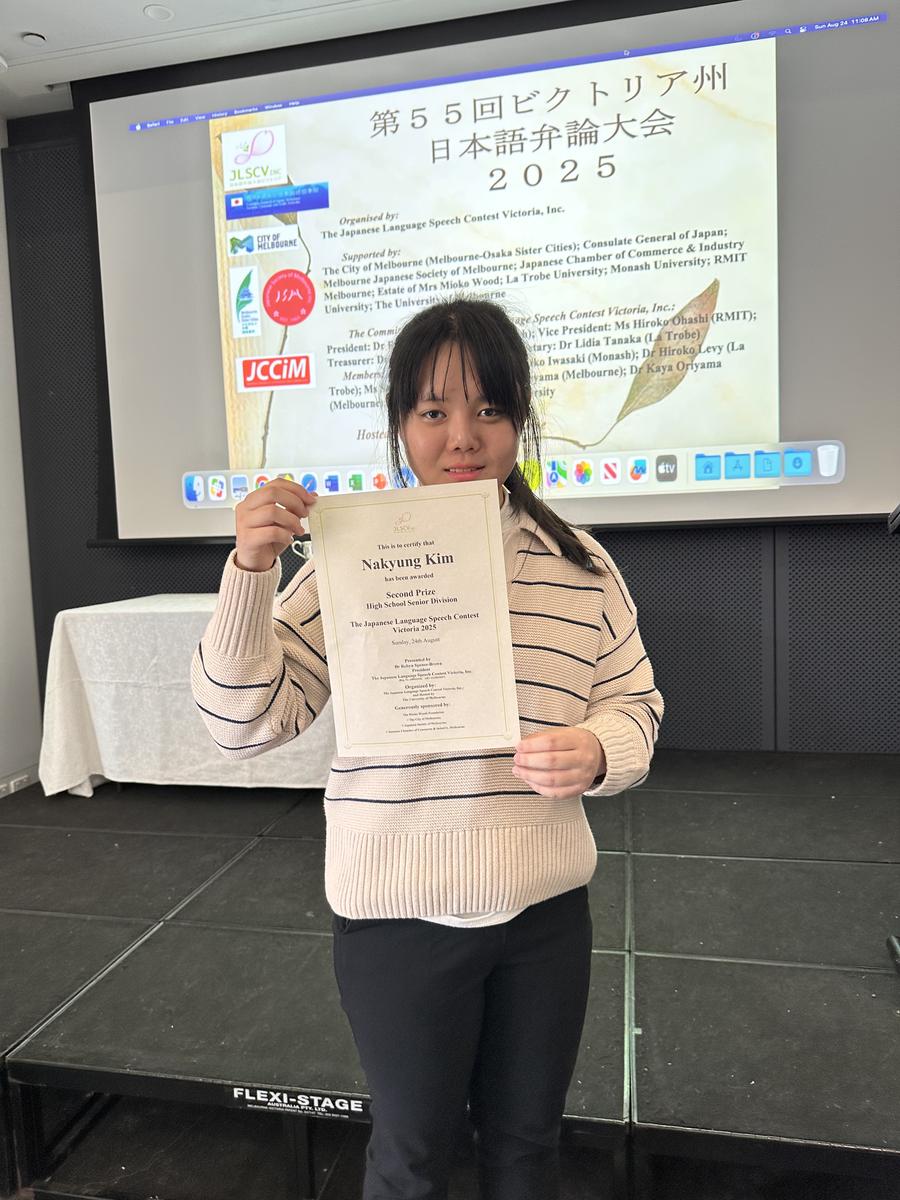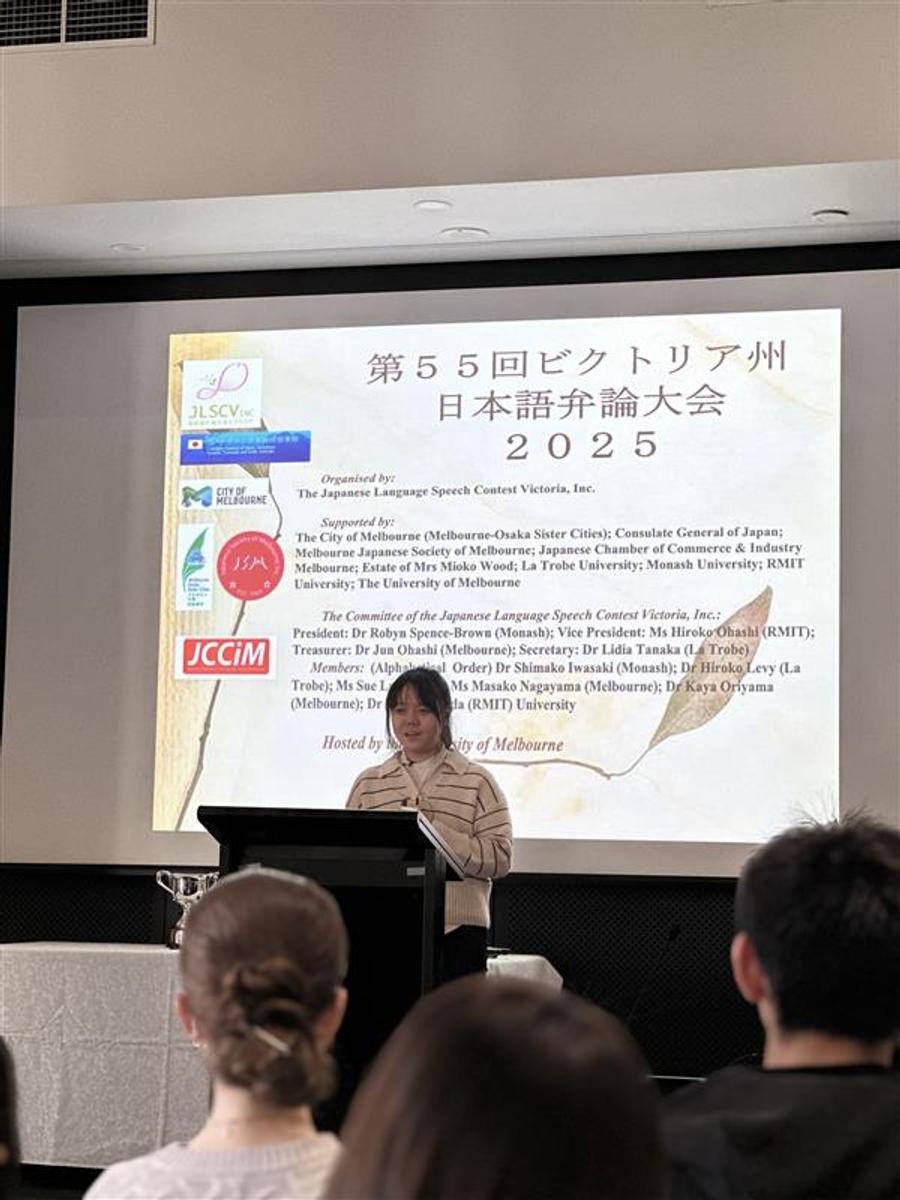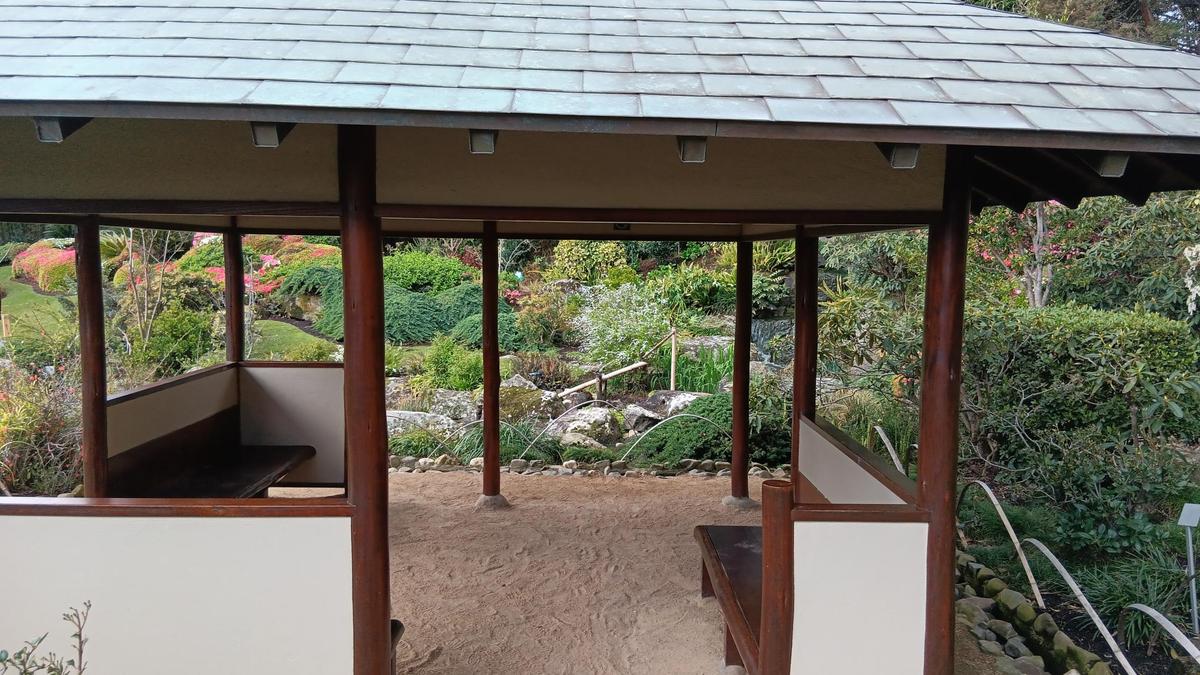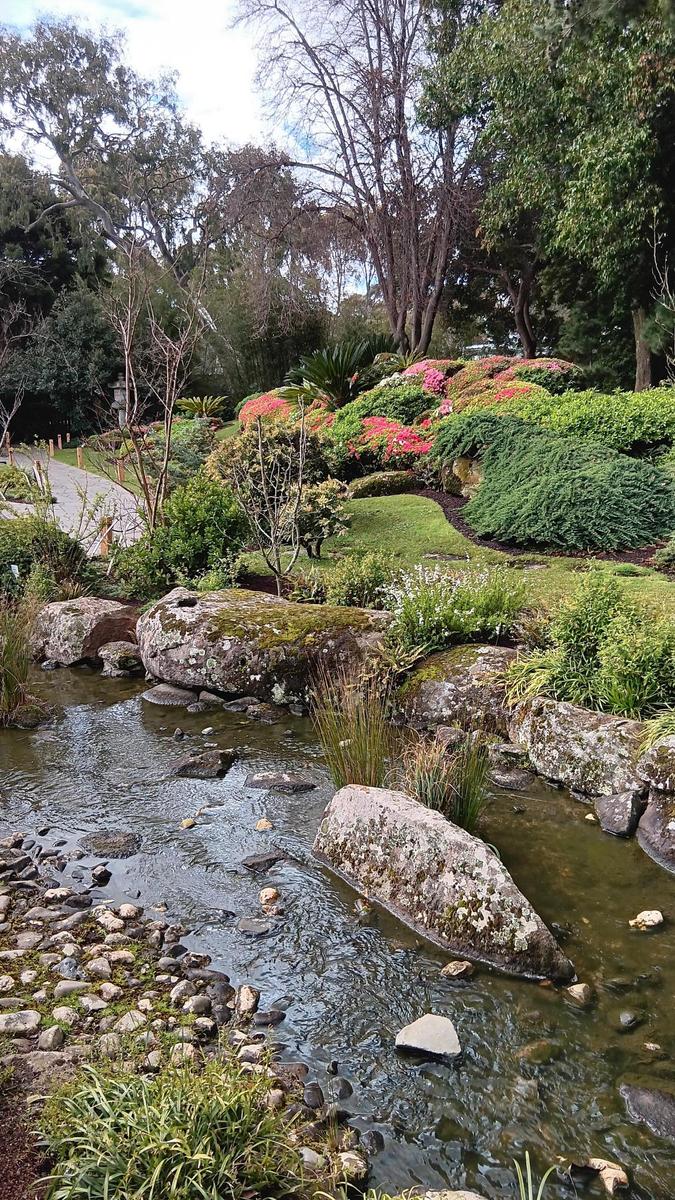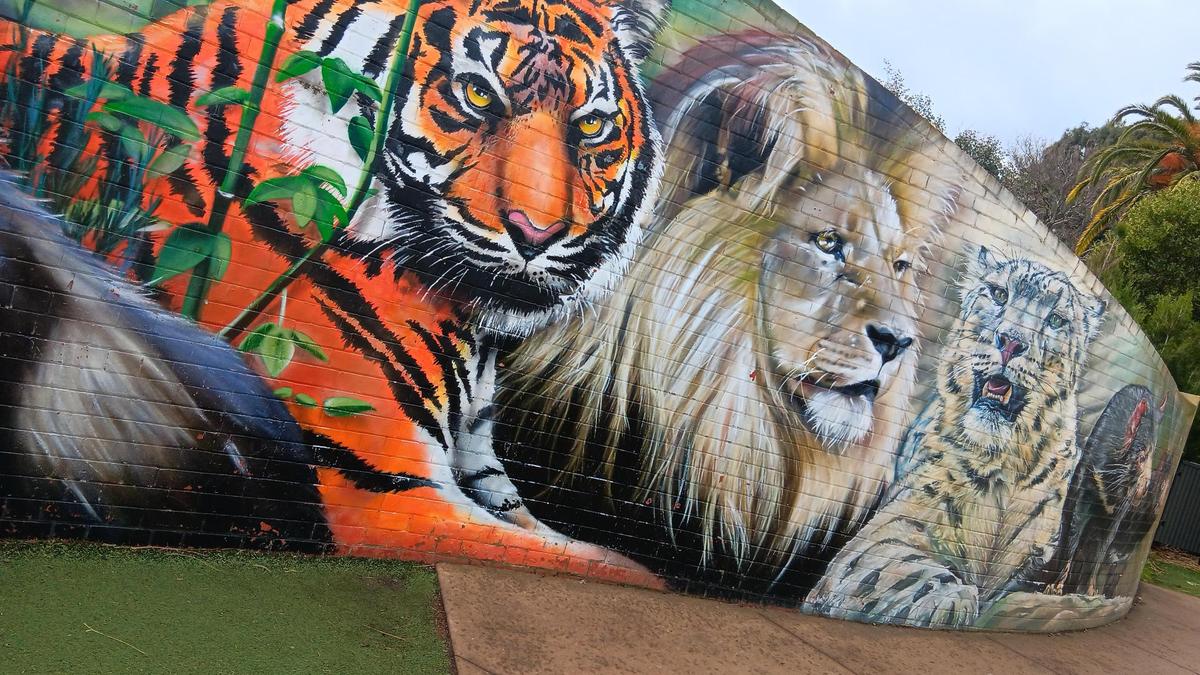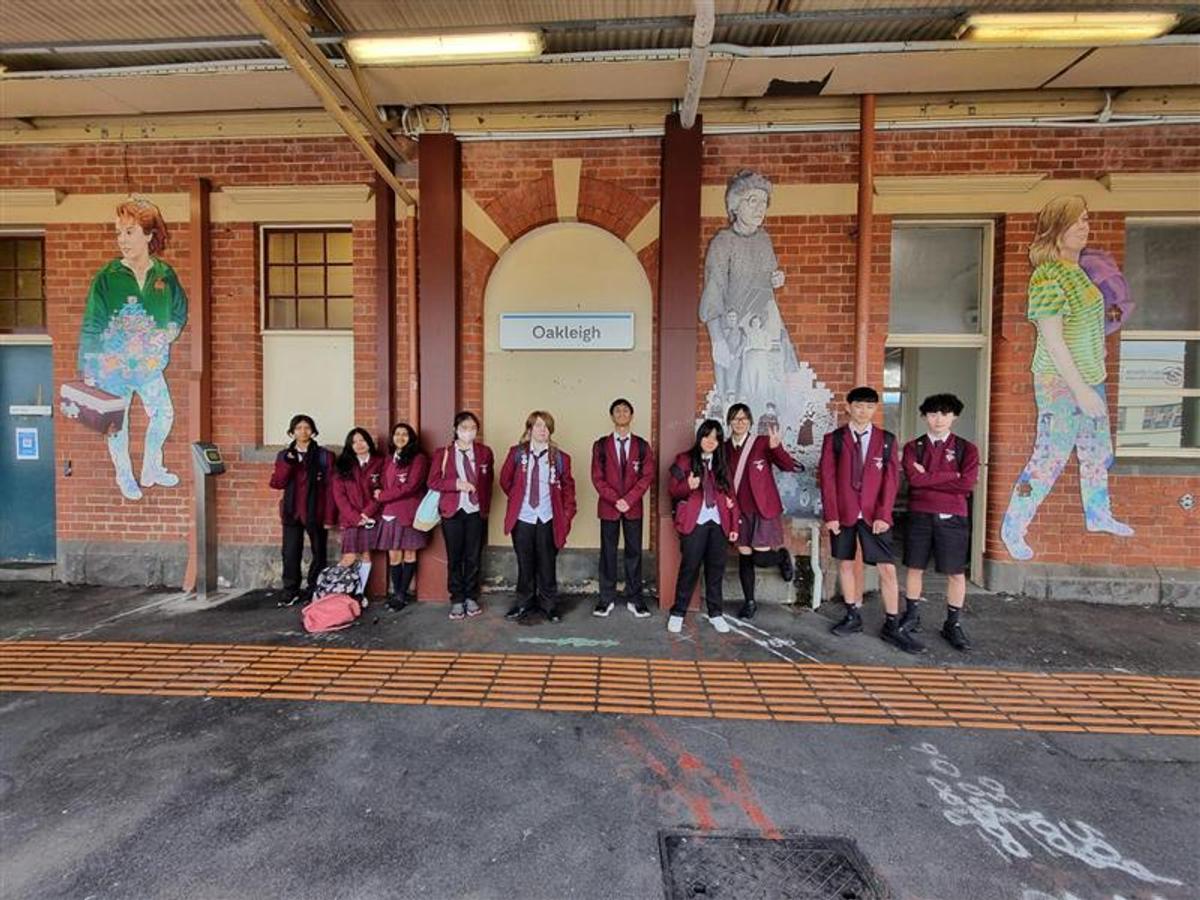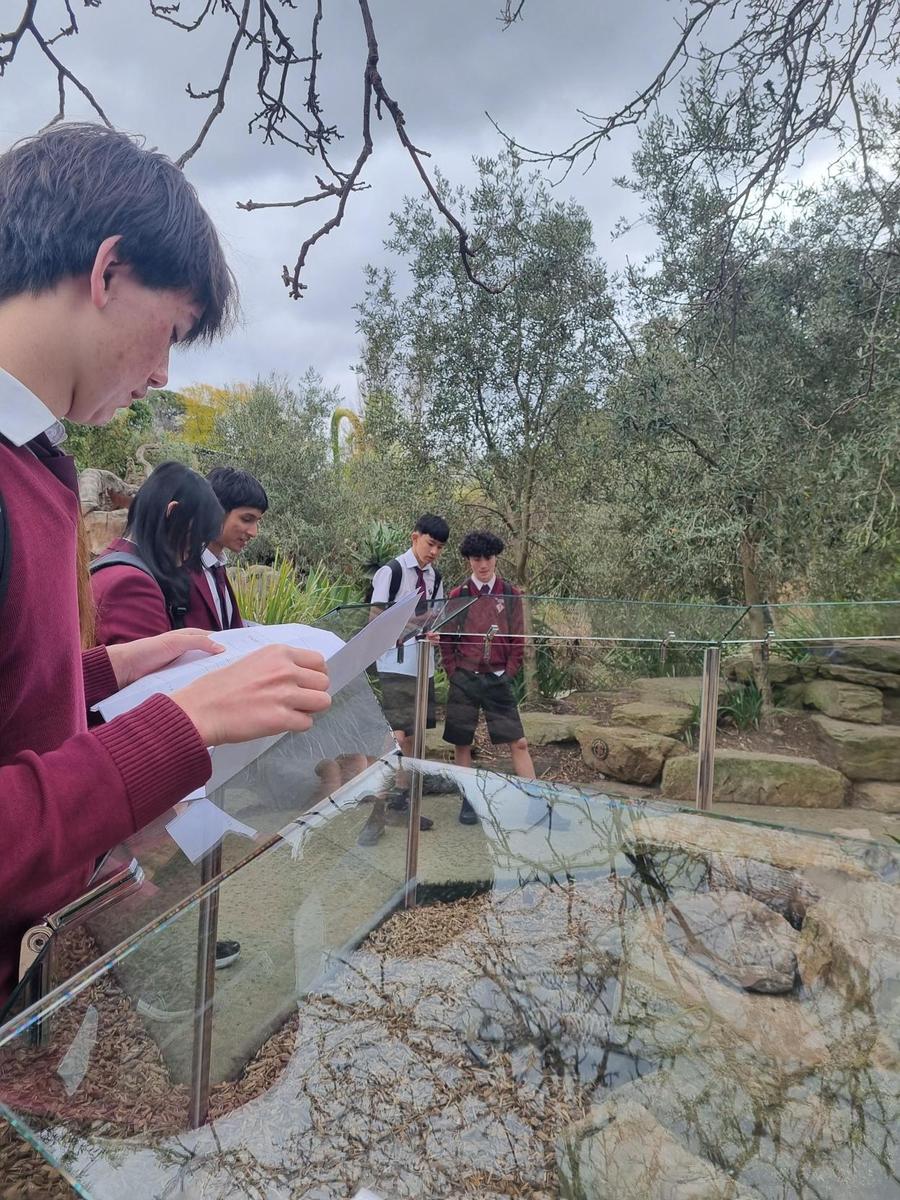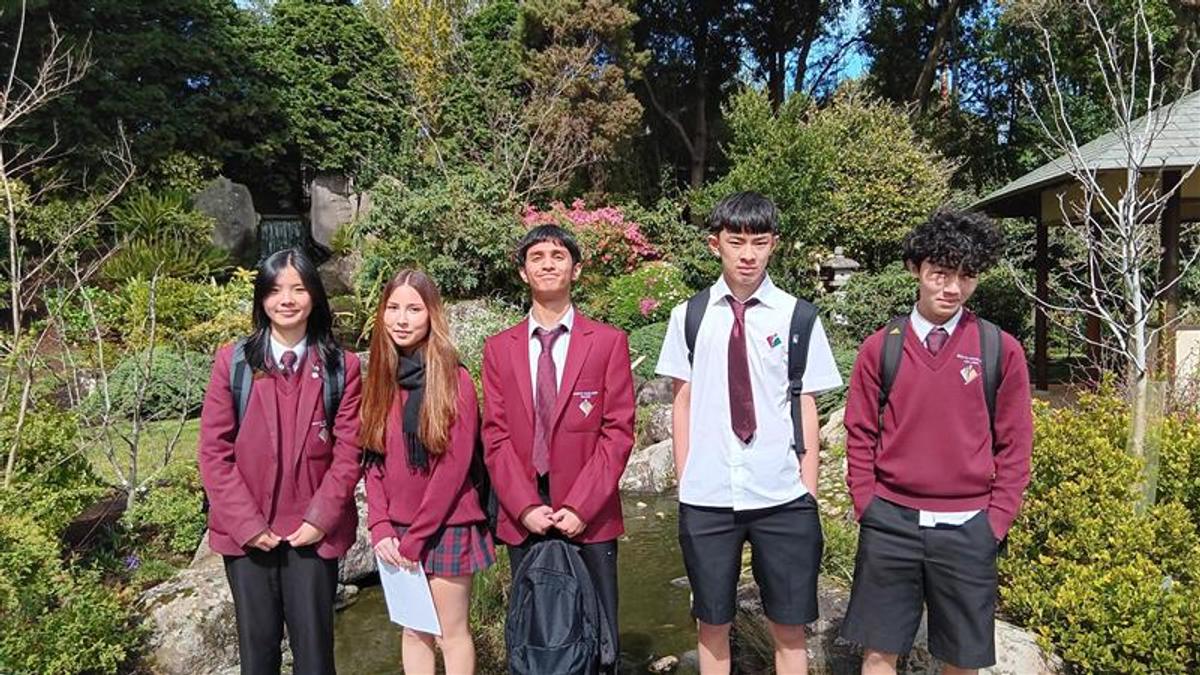Languages News
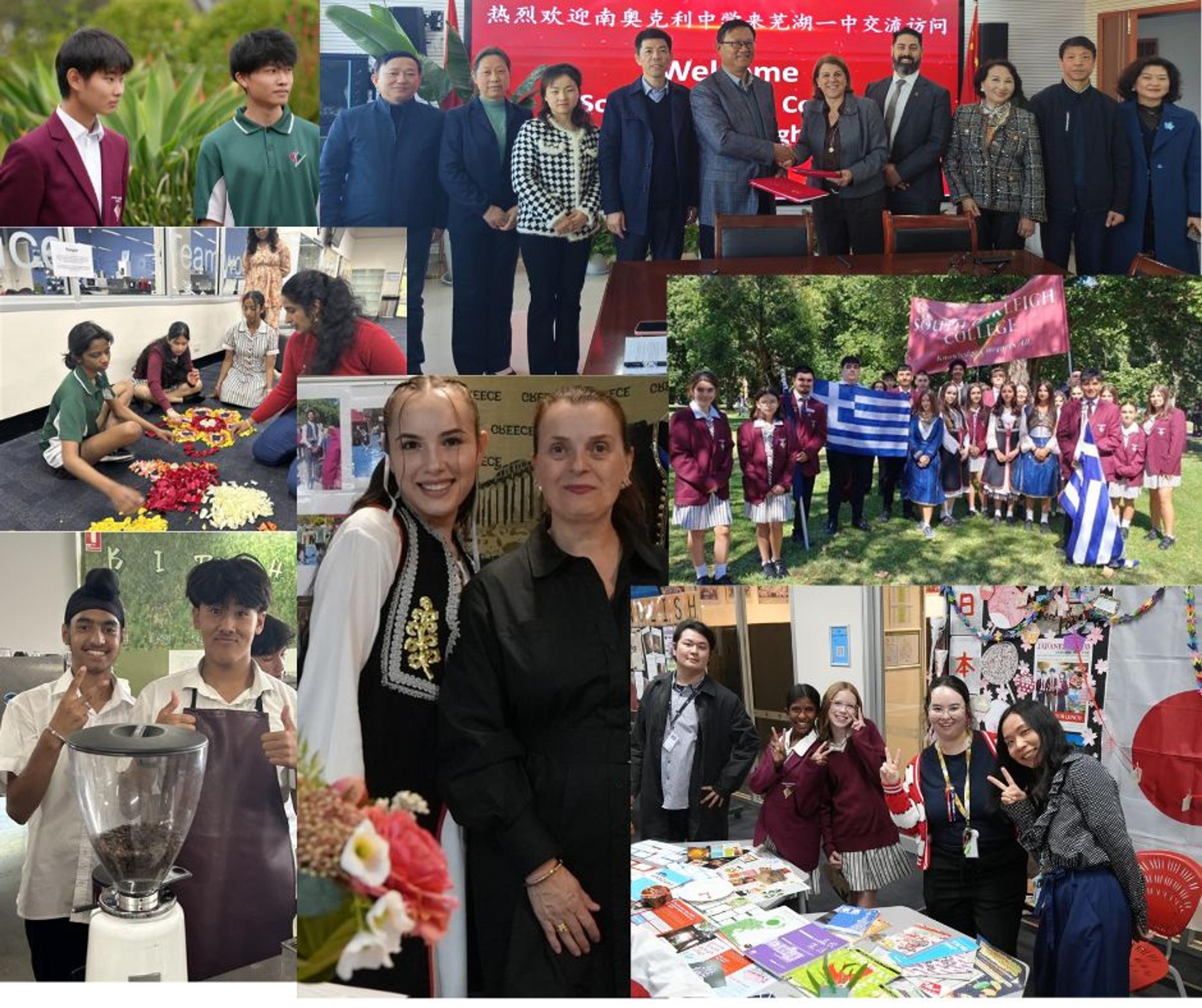
End Of Term 3:
Languages News
Greek Faculty
Hellenic Museum
On Friday, the 5th of September, Greek language students from Years 10–12 had the opportunity to visit the Hellenic Museum in the heart of the city. This enriching experience allowed students to delve into the mythology, art, and culture of ancient Greece.
During the guided tour, students explored a wide range of exhibits featuring statues of Greek gods, historical artifacts, and even had the chance to hold ancient coins, stones, and early Greek weaponry. The hands-on nature of the visit gave students a unique perspective on how ancient Greeks lived, worshipped, and fought.
Stefan Krozian
The most beautiful Greek statues
The main hall of the museum is filled with statues (αγάλματα) of ancient Greeks, ranging for a plain civilian, almost always idolised nude, to the women, represented with a slim cloth covering the torso, and even ancient Greek Gods! The museum is full of areas that store little items, such as coins, the head of an arrow, and symbolic pebbles that held an important part in the psychology of Ancient Greeks, that the host sometimes even passes on to the spectators. In every room the museum has to offer, you will find different fragments of a past-civilization, allowing you to explore and learn about the lifestyle the Greeks used to live by. Costumes from traditions and even found war Armor from these times to give you a taste of what the standards of the time were.
George Vakirtzis
Ancient Greek Game “Petteia”
Πεττεία is an ancient Greek game of pure skill. Two players face each other across a rectangular board which is marked with a grid of squares. The players each have an equal number of pieces, all of the same type, with one player's pieces differing from the other in colour. Pieces move around the board and capture one another by surrounding; a piece of one colour caught between two of the other is removed from play. The winner is the player who captures all of the opponent's pieces.
Angelique Sales
Greek Statues
Last Friday, our Greek class travelled into the city and visited the Hellenic Museum. A main highlight for all of us was viewing and admiring the statue of Athena that was shipped from the Acropolis Museum in Athens. The statue is a Roman copy from the 1st–2nd century CE made of Pentelic marble. Aθηνά is shown wearing a peplos, an aegis with the head of the Gorgon, and a himation, and she would have held a spear in her right hand. Taking in the information and learning about this statue allowed us to connect more with ancient Greek history and our culture!!
Angelique Manolis
The Ancient Greek artifacts
On the day of the Hellenic Museum excursion we learnt so many new things! The whole day was an opportunity for us to learn about our Greek heritage and where we all came from. My favourite part was seeing all of the ancient artifacts (αρχαία αντικείμενα) and learning about their uses and importance. Being able to see how people lived back then and being able to view things like the old healing sanctuaries were a once in a lifetime experience. I would love to go again and would recommend to anyone who's interested in learning about Greek culture/heritage.
Michael Bonavia
Women in Ancient Greece
On Friday our Greek class learnt about how the women in ancient Greece took care of their beauty, they used many natural ingredients that we use in our own day-to-day lives, they used olive oil (λάδι ελιάς), honey (μέλι), milk (γάλα), herbs (βότανα) and many more botanical elements. They used it not only for cooking but also their skincare and fragrances. During our tour the guide taught us how the olive oil was important, it was used as a cleanser and hair treatments. Learning about what Greece is most known for was an intriguing topic as we mainly use it for cooking when we could be using it for skin/haircare and it is a very healthy element to use in everything.
Vasileios Bambakos
An Insight into Spartan Armor: The Corinthian Helmet
The Corinthian-style helmet (Το Κορινθιακό κράνος) was an essential part of what protected a Spartan soldier. Its remarkably strong, one-piece bronze design was excellent at defending against spears and swords, covering most of the head and face.
However, this heavy protection had some notable downsides. The narrow eye slit made it difficult for the wearer to see to the side, and the helmet completely covered the ears, which would have impaired their hearing in battle. It's fascinating to see how later helmet designs learned from these trade-offs, making improvements while keeping the same strong design. The helmet serves as a great reminder that protective gear has always been a balance of defence and usability.
Dimitra Maniatis
Classroom Teacher (Greek)
Japanese Speech Contest Victoria
On the 27th August, Nakyung Kim of Year 10 competed in the Japanese Speech Contest Victoria in the High School Senior Division. Hosted by Melbourne University early on a Sunday morning, the contest was established to encourage learners of Japanese to practise and consolidate their language and public speaking skills.
Nakyung prepared the script for her speech, ‘Different interactions between friends in Australia and Japan 挨拶と関係について’, by drafting and re-drafting her work according to the feedback given from Japanese teachers Zhenghao Hua and Qian Chen, as well as our Japanese Language Teaching Assistants Saki Ota and Ami Collings. On the Friday before the contest, members of South Oakleigh College staff were invited to be in the audience of her final rehearsal, to provide her with feedback and encouragement for the big day.
At the end, we are proud to report back that, after very stiff competition from other schools, Nakyung was able to receive second place on her speech, receiving positive reviews on her public speaking and mannerisms. A big thank you as well to both Zhenghao Hua and Qian Chen, for kindly offering their time to chaperone Nakyung on the day, and their continued support of our students.
Melbourne Zoo Excursion
On 12th September, Hua-sensei’s Year 10 class visited the Melbourne Zoo to conduct a Japanese scavenger hunt. Having previously learnt their directions, the class worked together to navigate clues to each location in the Melbourne Zoo and answer questions about where they visited.
After the half-way point, students were also able to visit the Japanese garden at Melbourne Zoo, which was established to mark the sister-state relationship between Victoria and the Aichi Prefecture in Japan in the 1990s.
We are sure that students were able to enjoy seeing a variety of animals at the zoo, while being able to practise their Japanese comprehension skills in a real-life setting.
As for the photos, big thanks (and lollies) to Atsuya Kawasaki and Mai Pandjaputra for their diligent work during the excursion.
Bonnie Tynan
Classroom Teacher (Japanese)

